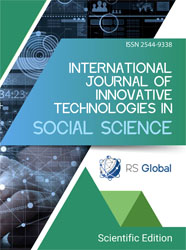FOOD ALLERGY AND BIRCH POLLEN: MOLECULAR MECHANISMS AND IMMUNOTHERAPY POSSIBILITIES
Abstract
Introduction and Aim of the Study: During the birch pollen season, cross-reactions between the allergen Bet v 1 and the Mal d 1 allergen from apples can induce pollen-related food allergy (prFA), particularly after apple consumption. The aim of this study is to investigate the molecular mechanisms of this allergy and present effective treatment and prevention methods, which could significantly improve the quality of life for allergy sufferers.
Review Methods: The PubMed database was used for the literature review. English search terms included: “allergy,” “apple varieties,” “birch pollinosis,” “allergen-specific immunotherapy,” “birch pollen-associated food allergy syndrome,” and “Mal d 1.”
Overview of Current Knowledge: Birch pollen allergy is one of the most common pollen allergies, with the Bet v 1 protein responsible for cross-reactive allergic responses following apple consumption. In apples, the Mal d 1 allergen triggers these reactions, which is particularly significant in Central and Northern Europe. Apples with red flesh are considered hypoallergenic due to their low Mal d 1 content and are a beneficial choice for allergic individuals. Various immunotherapy approaches, including sublingual immunotherapy, are utilized effectively to alleviate symptoms and support allergen tolerance.
Conclusion: Pollen-related food allergy associated with birch pollen significantly affects the daily lives of allergy sufferers, especially during the birch pollen season. Advances in molecular mechanism research have allowed the identification of apple varieties with lower allergenic potential, enabling their use in immunotherapy and offering hope for improving patients' quality of life.
References
Kalinowska M, Bielawska A, Lewandowska-Siwkiewicz H, et al.: content of phenolic compounds vs. variety, part of apple and cultivation model, extraction of phenolic compounds, biological properties. Plant Physiol Biochem. 2014 Nov;84:169-188. doi: 10.1016/j.plaphy.2014.09.006.
Breinholt, Vibeke Miller et al. “DESIRABLE VERSUS HARMFUL LEVELS OF INTAKE OF FLAVONOIDS AND PHENOLIC ACIDS.” (1999)..
Marzban G, Puehringer H, Dey R et al. Localisation and distribution of the major allergens in apple fruits. Plant Sci. 2005;169(2):387–394.
Wagner A, Zielińska-Bliźniewska H, Wagner W. The Incidence of Delayed-Type Hypersensitivity Reactions to Apples Among Patients Allergic to Birch Pollen. Allergy Asthma Immunol Res. 2018 Jul;10(4):420-424. doi: 10.4168/aair.2018.10.4.420.
Ahammer L, Grutsch S, Kamenik AS,et al. Structure of the Major Apple Allergen Mal d 1. J Agric Food Chem. 2017 Mar 1;65(8):1606-1612. doi: 10.1021/acs.jafc.6b05752.
Ahammer L, Grutsch S, Kamenik AS, et al. Structure of the Major Apple Allergen Mal d 1. J Agric Food Chem. 2017 Mar 1;65(8):1606-1612. doi: 10.1021/acs.jafc.6b05752.
Jahn-Schmid B, Radakovics A, Lüttkopf D, et al. Bet v 1142-156 is the dominant T-cell epitope of the major birch pollen allergen and important for cross-reactivity with Bet v 1-related food allergens. J Allergy Clin Immunol. 2005 Jul;116(1):213-9. doi: 10.1016/j.jaci.2005.04.019.
Amlot PL, Kemeny DM, Zachary C, et al. Oral allergy syndrome (OAS): symptoms of IgE-mediated hypersensitivity to foods. Clin Allergy. 1987 Jan;17(1):33-42. doi: 10.1111/j.1365-2222.1987.tb02317.x. PMID: 3829369. ewentualnie do zmiany na nowsze
Bohle B, Zwölfer B, Heratizadeh A, et al. Cooking birch pollen-related food: divergent consequences for IgE- and T cell-mediated reactivity in vitro and in vivo. J Allergy Clin Immunol. 2006 Jul;118(1):242-9. doi: 10.1016/j.jaci.2006.03.011.
Wassmann-Otto A, Heratizadeh A, Wichmann K, et al. Birch pollen-related foods can cause late eczematous reactions in patients with atopic dermatitis. Allergy. 2018 Oct;73(10):2046-2054. doi: 10.1111/all.13454.
Gao ZS, van de Weg WE, Schaart JG, et al. Genomic cloning and linkage mapping of the Mal d 1 (PR-10) gene family in apple (Malus domestica). Theor Appl Genet. 2005 Jun;111(1):171-83. doi: 10.1007/s00122-005-2018-4.
Marković-Housley Z, Degano M, Lamba D, et al. Crystal structure of a hypoallergenic isoform of the major birch pollen allergen Bet v 1 and its likely biological function as a plant steroid carrier. J Mol Biol. 2003 Jan 3;325(1):123-33. doi: 10.1016/s0022-2836(02)01197-x.
Paris R, Pagliarani G, Savazzini F, et al. Comparative analysis of allergen genes and pro-inflammatory factors in pollen and fruit of apple varieties. Plant Sci. 2017 Nov;264:57-68. doi: 10.1016/j.plantsci.2017.08.006.
Vegro M, Eccher G, Populin F, et al. Old Apple (Malus domestica L. Borkh) Varieties with Hypoallergenic Properties: An Integrated Approach for Studying Apple Allergenicity. J Agric Food Chem. 2016 Dec 7;64(48):9224-9236. doi: 10.1021/acs.jafc.6b03976.
Schmitz‐Eiberger M, Matthes A. Effect of harvest maturity, duration of storage and shelf life of apples on the allergen Mal d 1, polyphenoloxidase activity and polyphenol content. Food Chem 2011; 127: 1459–1464. doi.org/10.1016/j.foodchem.2011.01.101
Nothegger B, Reider N, Covaciu CE, et al. Allergen-specific immunotherapy with apples: selected cultivars could be a promising tool for birch pollen allergy. J Eur Acad Dermatol Venereol. 2020 Jun;34(6):1286-1292. doi: 10.1111/jdv.16201.
Kinaciyan T, Nagl B, Faustmann S, et al. Efficacy and safety of 4 months of sublingual immunotherapy with recombinant Mal d 1 and Bet v 1 in patients with birch pollen-related apple allergy. J Allergy Clin Immunol. 2018 Mar;141(3):1002-1008. doi: 10.1016/j.jaci.2017.07.036.
Takács K, Szamos J, Szabó EE, et al Apple allergens as affected by cultivation technolog and variental factors. Int J Hortic Sci. 2010;16(3):91–93.
Schenk MF, Van Der Maas MP, Smulders MJM, et al. Consumer attitudes towards hypoallergenic apples that alleviate mild apple allergy. Food Qual Prefer. 2011;22(1):83–91.
Views:
83
Downloads:
35
Copyright (c) 2025 Weronika Duda, Monika Domagała, Izabela Domańska, Emilia Majewska, Aleksandra Sagan, Małgorzata Piśkiewicz, Joanna Wiewióra

This work is licensed under a Creative Commons Attribution 4.0 International License.
All articles are published in open-access and licensed under a Creative Commons Attribution 4.0 International License (CC BY 4.0). Hence, authors retain copyright to the content of the articles.
CC BY 4.0 License allows content to be copied, adapted, displayed, distributed, re-published or otherwise re-used for any purpose including for adaptation and commercial use provided the content is attributed.











